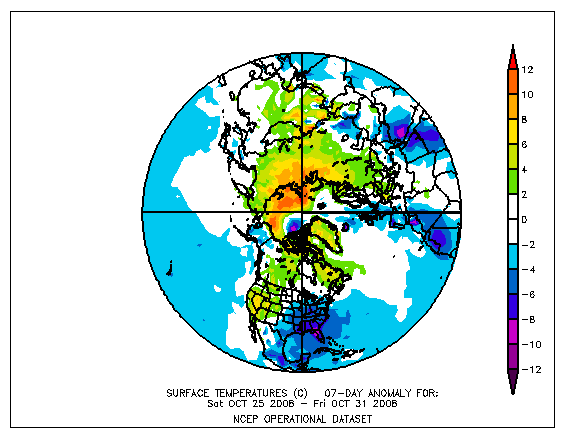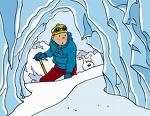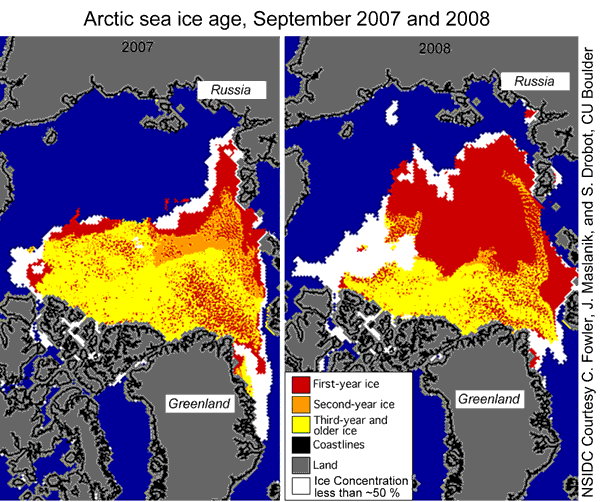 More data on the state of the methane hydrates on the Siberian shelf emerged during the American Geophysical Union’s Fall meeting in San Francisco this week. At a press conference covering recent work in the Arctic, Igor Semiletov, the leader of the team working on the Yakov Smirnitsky last (Arctic) summer, told reporters:
More data on the state of the methane hydrates on the Siberian shelf emerged during the American Geophysical Union’s Fall meeting in San Francisco this week. At a press conference covering recent work in the Arctic, Igor Semiletov, the leader of the team working on the Yakov Smirnitsky last (Arctic) summer, told reporters:
“The concentrations of the methane were the highest ever measured in the summertime in the Arctic Ocean,” Semiletov said. “We have found methane bubble clouds above the gas-charged sediment and above the chimneys going through the sediment.” [Science Daily, e! Science News]
A reporter at the press conference, who blogs at A Change In The Wind, asked Semiletov if the increase in methane release his team had discovered constituted “a global emergency”. In his blog entry he writes:
[…] his struggle with the question was evident. I tracked him down later, and asked if he felt he was the wrong person to be answering such a huge question. He admitted his discomfort, but said he thought it was the best question he was asked, and insisted:
“I am the person responsible for this research, and I think we have to tell people that something is happening now with the subsea permafrost.”
Why? A Change In The Wind explains:
Semiletov thinks that if just 1% of the ESAS methane is released, it will push total atmospheric methane up to 6 parts per million, and cites researchers such as David Archer in arguing that this would push us past the point of no return, towards runaway global warming.
Six ppm methane is a little over three times the current level, and with a global warming potential of 25, is equivalent to 150 ppm CO2, or 50 years worth of current annual CO2 emissions. There’s no reference to any time scale for this release, but the possibility should be enough to ring alarm bells — and loudly.
[There’s plenty of other Arctic/climate related material to blog from the Fall AGU meeting, and I’ll get to some of it soon, but for the time being Christmas shopping looms…]

 Time for an Arctic update and a bit of “original” research. There’s been quite a bit of polar news around, and a rapid freeze-up is underway in the Arctic – so rapid that
Time for an Arctic update and a bit of “original” research. There’s been quite a bit of polar news around, and a rapid freeze-up is underway in the Arctic – so rapid that  The latest satellite data shows that this summer’s snowmelt in northern Greenland was “extreme”, according to Marco Tedesco, assistant professor of Earth & Atmospheric Sciences at The City College of New York. From the press release:
The latest satellite data shows that this summer’s snowmelt in northern Greenland was “extreme”, according to Marco Tedesco, assistant professor of Earth & Atmospheric Sciences at The City College of New York. From the press release: